From The Potter’s Wheel: Khurja Ceramics Artisans On Fabuliv
Who doesn’t love decorative and crafty home decor pieces, right?
For instance, no matter how many dining sets you have, you feel like switching them up every other month. No matter how many vases you have, one anniversary or a birthday and you’ll want to have more. Especially when each of these pieces adds a hint of exclusivity to your space.
While most home enthusiasts will step into home decor showrooms and look for artsy products, we at Fabuliv are strong supporters of bringing in what is truly exclusive - things that are designed by hand, by the very skilled local artisans of India.
And today, we’re talking about those that you probably have already heard about, have products created by them or have been eyeing their work for a while - ceramics from the artisans of Khurja.
India, with its varied cultures and traditions, is home to a number of art forms that are either ethnic to the Indian land or have been brought to the country from different parts of the world. Especially, since the country had been colonized for long periods, people in different parts of the country took to these artworks which have now become synonymous to the places where it is still being practiced, and one such artwork that stems from Uttar Pradesh’s Khurja city is Khurja pottery or glazed pottery.
Khurja makes more than half of India’s ceramic ware a fact lesser known, but with the myriad state of affairs on the streets of Khurja, one can find themselves in the middle on what to choose. But Fabuliv is here to solve the confusion, as you can sift through beautiful Khurja decor articles
History and origin of Khurja
The art form that dates back to more 600-700 years, comes from the infamous Pathans of Khurja city in Bulandshahr district. Various folklore is attached to this splendid art form, one of which is that this form of pottery arrived in the city during a campaign of Turco-Mongol barbarian Taimur Lame; whereas another legend goes that the Mughals when colonized India brought in the form of pottery to our land. Whatever be the history, in today’s times, this creative activity is the livelihood for a number of artisan groups.
Khurja city which is hardly spread within 15.8 sq km but the signs of its status as India’s ceramic town extends way beyond that. You’ll easily spot over 500 factories in the city which produce Khurja artwork, especially pots, vases, and other ceramics.
Despite being hand painted and handmade, Khurja pottery reasonably priced, similar to this Sherril rustic vase. It carries the glazed effect beautifully with brown colored artwork making the vase look vintage and adding crude beauty to any corner.

The main turning point in Khurja’s status as the ceramic town came in 1940. Poddar tells a widely known story: During World War II, the British ordered few ceramic loo seats for their soldiers in the battlefield. Final products turned out to be better than their expectations. The British realized the sleepy town’s pottery potential and decided to promote it as a ceramic hub.
However, in one of the books written by Baidyanath Saraswati, he has written: “Khurja in Bulandshahr is one of the oldest centers for glazed pottery in India”. He has further written that “These potters often call themselves as Multani Kumhars suggesting that their origin was Multan”.
The Uttar Pradesh government established a pottery factory which made use of the glazed method to create these ceramic articles, which was the initial bid to the start of modern day Khurja pottery that one can witness in various parts of the country. While the factory was shut down within 4-5 years in 1946; it was yet again redeveloped by 1952 as a pottery development center. Khurja. today also hosts one of the Central Glass and Ceramic Research Institute
There are about 400 Khurja pottery factories in the town that have employed about 15,000 artisans as official and another 25,000 as unofficial employees. Apart from India, the pottery items manufactured in these units is sold in various other countries such as USA, UK, New Zealand, UAE, and Australia.
The art of molding
Khurja ceramics and pottery can now be spotted in different parts of the country, thanks to the convenience of transportation and the ease of a platform to sell, unlike earlier. But, each of these pots goes through a process that requires an eye for detail and effortless strokes of the brush.
These lead-free pieces of art require raw material which is sourced from different parts of the country which then undergo stages of production before becoming one of these beautiful decor pieces that you bring home, just like these Alfred vintage vases and the textured vase with a very unusual shape, symbolic of the age-old jars. These glazed vases with subtle colors and the touch of wooden work is a one-off decor item that can emphasize interiors for your home.

When we say stages of production, it has also undergone a change in the manner that it used to be produced. From, red clay pottery, the artisans moved on to blue glaze and then transitioned on to red clay articles with the engobe of white clay, painting floral designs.
This opium handpainted vase is a beautiful rendition of the above process which has a glossy touch to the wooden base work with floral fine artwork that is creatively painted with immense skill and the focus.
The demand for Khurja and association with Fabuliv
Thousands of Khurja potters make up the chunk of these businesses, and a small part of these chunks are the part of Fabuliv’s group of artisans too. Our artisan group start work on different ceramics like vases, pots, plates, and teacups and create glazed ceramics that adorn your kitchen shelves and other furniture.
These ceramics are beautifully handpainted with different designs and incorporated with woodwork, then burnt on the kiln at the appropriate temperature, later glazed to create vintage and aesthetic vases.
The small handles, the unique shape and the glaze added to it all, is what makes them must-haves in a fabulous home. And that’s why we at Fabuliv are working with these artisans every day to bring them to your homes.

Each of the pieces that they create, don’t just have immense hard work and creativity behind them but are also infused with an innovative thought process at each stage of production. Most of the pieces on Fabuliv are not stereotypical to one kind of ceramic ware - they use different materials and each one has a different design thinking behind them.
Take for instance this beautiful dining set elephant grey rimmed lid serving bowl.

Or these strawberry pink serving bowls which are wooden from the outside but have the glazed infamous Khurja work on the inside in perfect contrast.

Makes you want to click pictures of your crockery apart from all the #healthyeating pictures you like to post on Instagram, right?
Fabuliv today is a second home to these potters, encouraging and working with them every day to craft the most unique artwork and taking it to the homes where they truly belong.
Bring a Khurja decor piece home, choose from over 1,500 products that are carefully crafted and curated by our design experts and group of local artisans, and be a customer that takes delight in pushing the different art forms of India forward with Fabuliv.
Beautiful homes are made of products designed from the heart.
Don’t believe us?
Don’t forget to take a look at these Fabuliv homes and how they are inspiring us to do better every day.

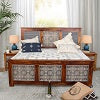

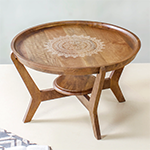
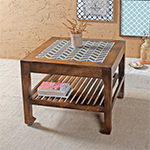
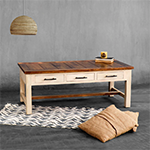
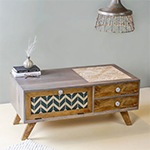
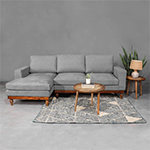
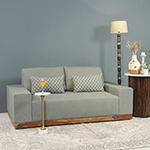
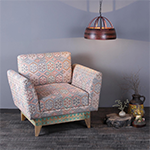

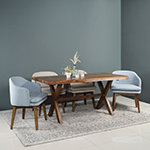
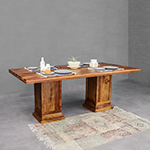











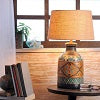



















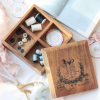
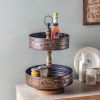
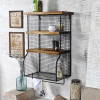

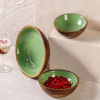
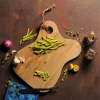
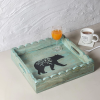

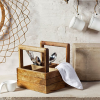




46 Comments
Your Blog is very nice. Wish to see much more like this. Thanks for sharing your information.
https://terracrafts.com/
combigan bottle sizecombigan brimonidine generic
brimonidine tartrate 2% brimonidine tartrate ophthalmic